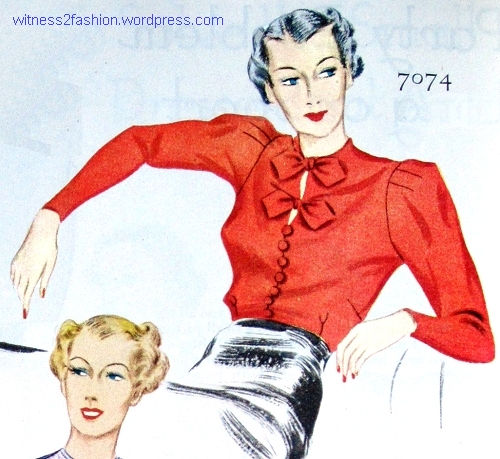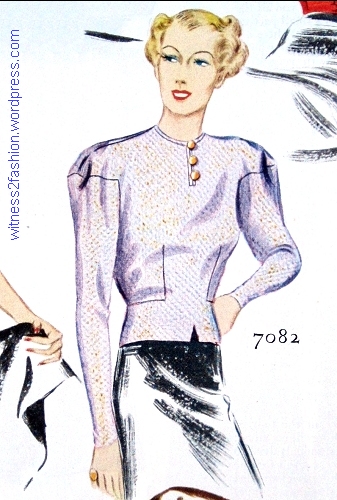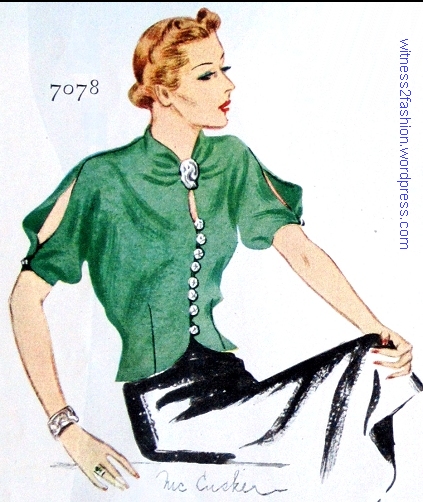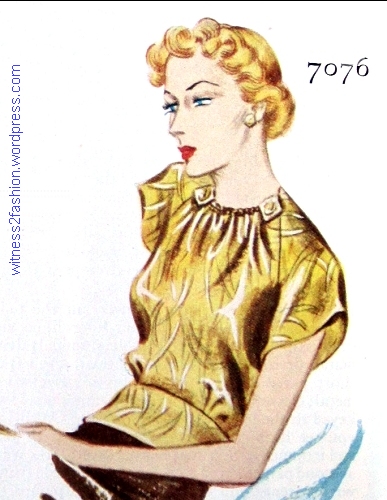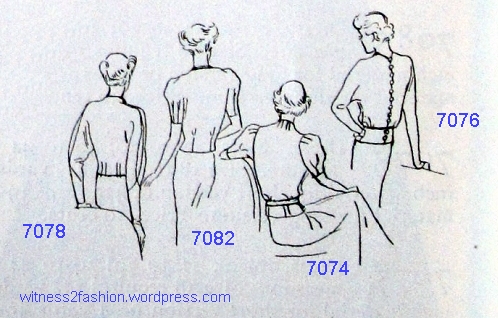Butterick patterns chosen for the Woman’s Home Companion were almost always cost-conscious. These “Gay Blouses” featured in November of 1936 are illustrated in evening materials, to be worn with a long velveteen skirt. They require very little material — as little as one yard and a quarter.

Make a Gay Blouse From a Little Material,” Woman’s Home Companion, November 1936, p. 80. Illustration signed McCuskin.
“How would you like to wear something glamorous and different to your next theater party or concert? If so, here is a practical suggestion. Make one of these formal blouses. You can do it in short order for the patterns are easy. And what is more, they require very little material. A remnant as short as one and one quarter or no longer than two yards is all you need for any one of them in size thirty-six.
“Here is a chance to indulge your taste for the most luxurious metal cloth, the softest satin, the richest velvet or the newest cloque. Any material shows to advantage in these simple designs.”
Companion-Butterick pattern 7074, dated 1936.
The Commercial Pattern Archive has Butterick pattern 7074, so you can see other views by clicking here.
Companion-Butterick pattern 7082, from Nov. 1936.
“Smart women are wearing them with short sleeves to afternoon parties and even to dinner dances with their long-skirted suits. However, long sleeves are also included in the patterns.”
Companion-Butterick pattern 7078 from 1936. I’m assuming that the large clip/brooch at the neck is optional jewelry.
Katharine Hepburn wore an outfit with open sleeves (rather like pattern 7078) in the movie Christopher Strong, in 1933. It was issued as Butterick Pattern 5156.
Companion-Butterick pattern 7076 from November 1936, WHC. The squares at the neckline are probably not decorative buttons, but a pair of dress clips, a jewelry style popular in the nineteen thirties and forties.
“There may be an extra skirt already hanging in your closet. If not, plain black, brown, or wine-colored velveteen would complete a rich-looking costume, deceptively rich-looking when you consider the small quantity of fabric and the simplicity.” — Woman’s H0me Companion, November 1936, p. 80.
Alternate views of patterns 7078, 7082, 7074, and 7076. WHC, Nov. 1936.
Elsa Schiaparelli had begun experimenting with textured fabrics in 1933, like this “boldly crinkled rayon crepe fabric called ‘treebark.’ ” (From Shocking: The Art and Fashion of Elsa Schiaparelli, by Dilys Blum.)
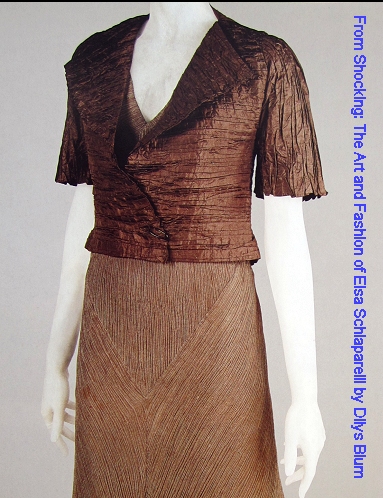
Elsa Schiaparelli began using matelasse and other textured crepe fabrics in the early 1930s.
An evening blouse made of a textured fabric — especially if it had metallic threads — would be quite chic.
The models’ close-to-the-head hairstyles are also interesting. Two of them appear to have long hair that has been rolled up at sides and back.
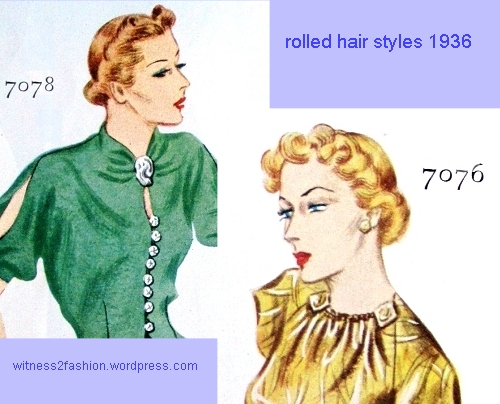
Rolled hair styles, Woman’s Home Companion, Nov. 1936.
Their flat crowns would be compatible with the brimless hats of 1936.

